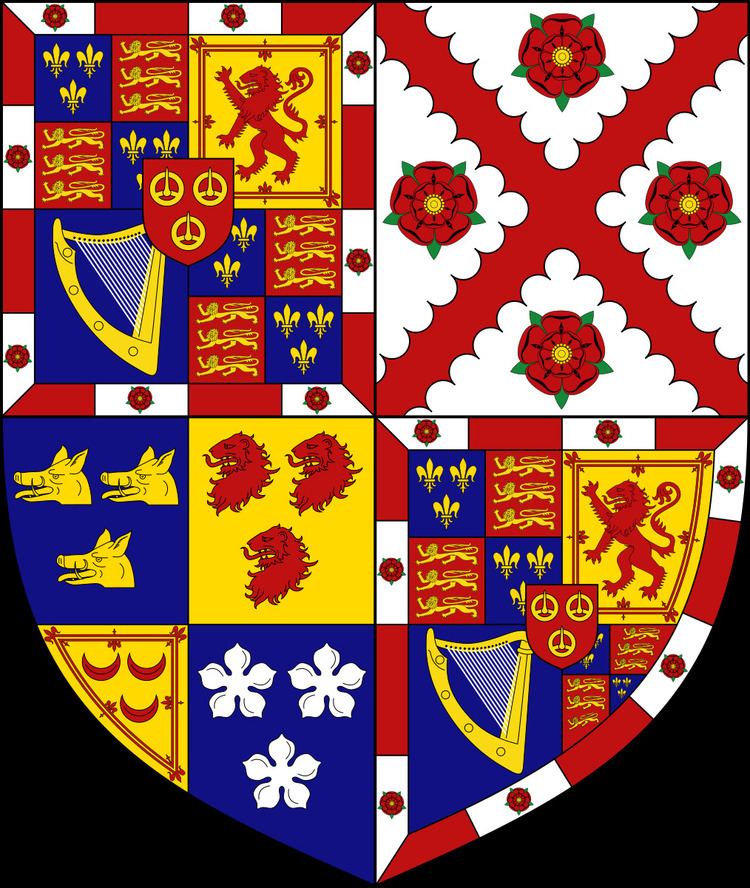 | ||
The title Duke of Gordon has been created once in the Peerage of Scotland and again in the Peerage of the United Kingdom.
Contents
The Dukedom, named after the Clan Gordon, was first created for the 4th Marquess of Huntly, who on 3 November 1684 was created Duke of Gordon, Marquess of Huntly, Earl of Huntly and Enzie (all three of which he already held by an older creation), Viscount of Inverness, and Lord Strathaven, Balmore, Auchindoun, Garthie and Kincardine. On 2 July 1784, the 4th Duke was created Earl of Norwich, in the County of Norfolk, and Baron Gordon, of Huntley in the County of Gloucester, in the Peerage of Great Britain. The principal family seat was Gordon Castle. The Dukedom became extinct in 1836, along with all the titles created in 1684 and 1784.
Most of the Gordon estates passed to the son of the 5th Duke's eldest sister, the 5th Duke of Richmond, whose main seat was Goodwood House in Sussex. In 1876 his son, the 6th Duke, was created Duke of Gordon, of Gordon Castle in Scotland, and Earl of Kinrara, in the County of Inverness. Thus, the Duke holds four dukedoms (including the titular Aubigny-sur-Nère; see Duke of Aubigny), more than any other person in the realm. Aubigny is in the defunct Peerage of France and the central arms of the Duke are based on the original Jacobean ones for the Union of the Crowns, with the inherited but inactive English claims to the French throne also represented prominently.
